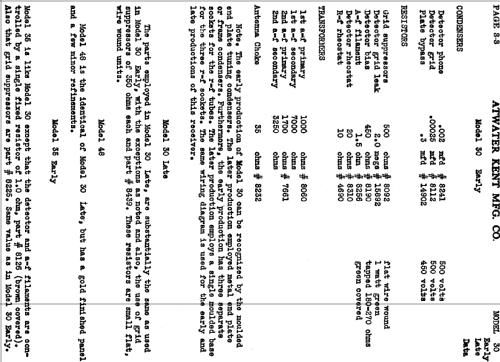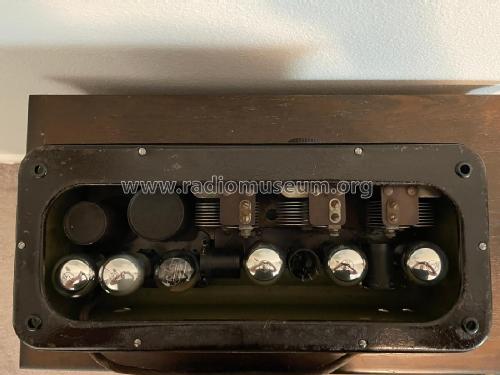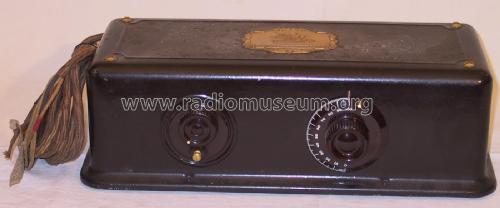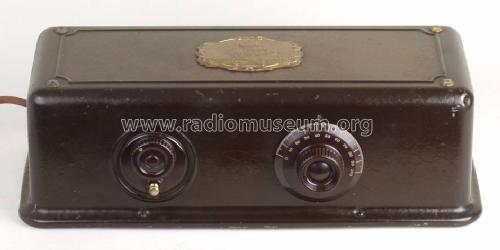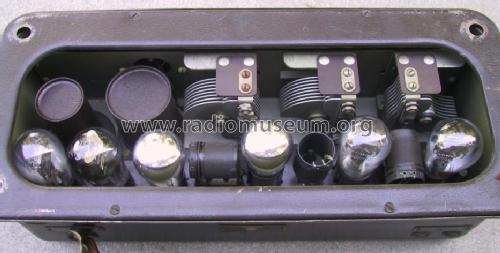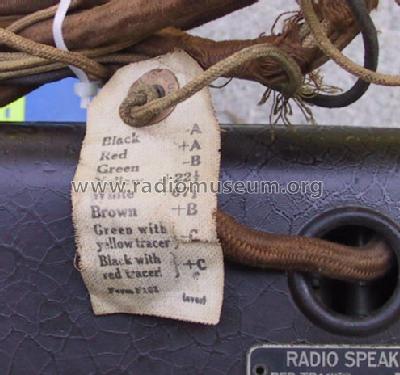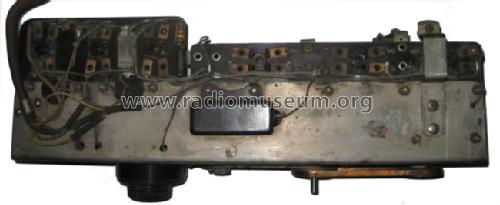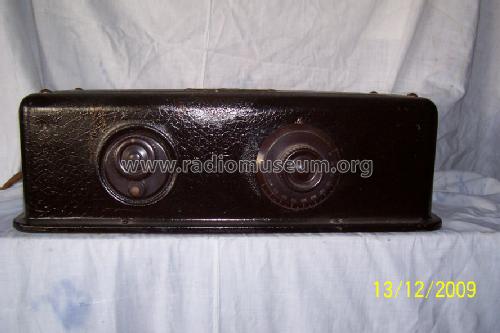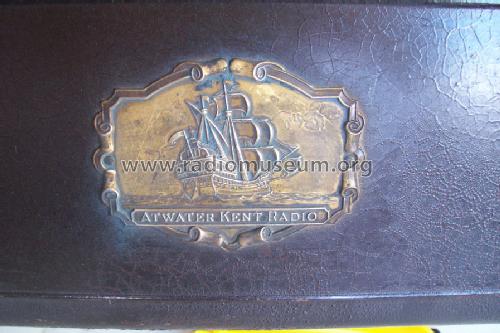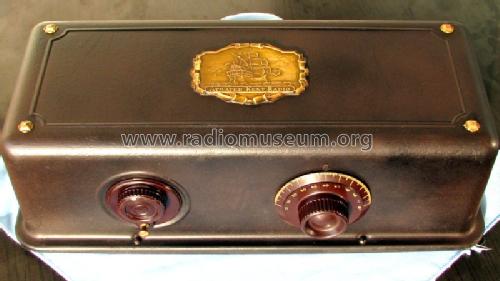8100 Model 35 Table model
Atwater Kent Mfg. Co.; Philadelphia, USA
- Country
- United States of America (USA)
- Manufacturer / Brand
- Atwater Kent Mfg. Co.; Philadelphia, USA
- Year
- 1926
- Category
- Broadcast Receiver - or past WW2 Tuner
- Radiomuseum.org ID
- 33247
Click on the schematic thumbnail to request the schematic as a free document.
- Number of Tubes
- 6
- Main principle
- TRF without regeneration
- Tuned circuits
- 3 AM circuit(s)
- Wave bands
- Broadcast only (MW).
- Power type and voltage
- Storage and/or dry batteries / 6 & 90 Volt
- Loudspeaker
- - This model requires external speaker(s).
- Material
- Metal case
- from Radiomuseum.org
- Model: 8100 Model 35 [Table model] - Atwater Kent Mfg. Co.;
- Shape
- Tablemodel, with any shape - general.
- Dimensions (WHD)
- 17.2 x 5.25 x 7.5 inch / 437 x 133 x 191 mm
- Notes
-
One single rheostat only; One dial (primary tuning control knob) Detector can be CX-301A, CX-300A or CX-112A. 2nd AF can be CX-371A or CX-112A.
Price in Italy, 1928: 2300 ITL.
In Italy it was supplied complete with USA tubes and Atwater-Kent loudspeaker, and batteries for the filament and plate voltages.
- Net weight (2.2 lb = 1 kg)
- 5.5 kg / 12 lb 1.8 oz (12.115 lb)
- Price in first year of sale
- 70.00 $
- External source of data
- Ernst Erb
- Source of data
- Radio Collector`s Guide 1921-1932
- Circuit diagram reference
- Rider's Perpetual, Volume 1 = 1931/1934 (for 1919-1931)
- Mentioned in
- Collector's Guide to Antique Radios 4. Edition
- Literature/Schematics (1)
- A.Atwater Kent, The Man, 2002
- Literature/Schematics (2)
- -- Original prospect or advert (La Radio per Tutti, Italy, dossier number 3, 1928)
- Other Models
-
Here you find 507 models, 331 with images and 332 with schematics for wireless sets etc. In French: TSF for Télégraphie sans fil.
All listed radios etc. from Atwater Kent Mfg. Co.; Philadelphia, USA
Collections
The model 8100 is part of the collections of the following members.
Forum contributions about this model: Atwater Kent Mfg. Co: 8100 Model 35
Threads: 1 | Posts: 4
Hello folks,
I have a two AK 35 in my workshop awaiting restoration. They are in a fairly good condition.
The question I have is related to the paint these ones had.
The thing is that mine, and I think all the ones I have ever seen on internet, have the paint deteriorated and crackled.
Like this:


So the question is... the original paint was all solid and flat? Or did it come with some sort of crackle that with time deteriorated?
OR... is it that being a metal case, with the temprature changes, the case caused forces that eventually broke the layer of bright finish?
A couple more pics of details:


These last two, show that there is still some crackle, but without the top layer being deteriorated..
All in all, any ideas of how I should process the cabinet will be appreciated.
REGARDS!
Javier Albinarrate, 14.Sep.11



